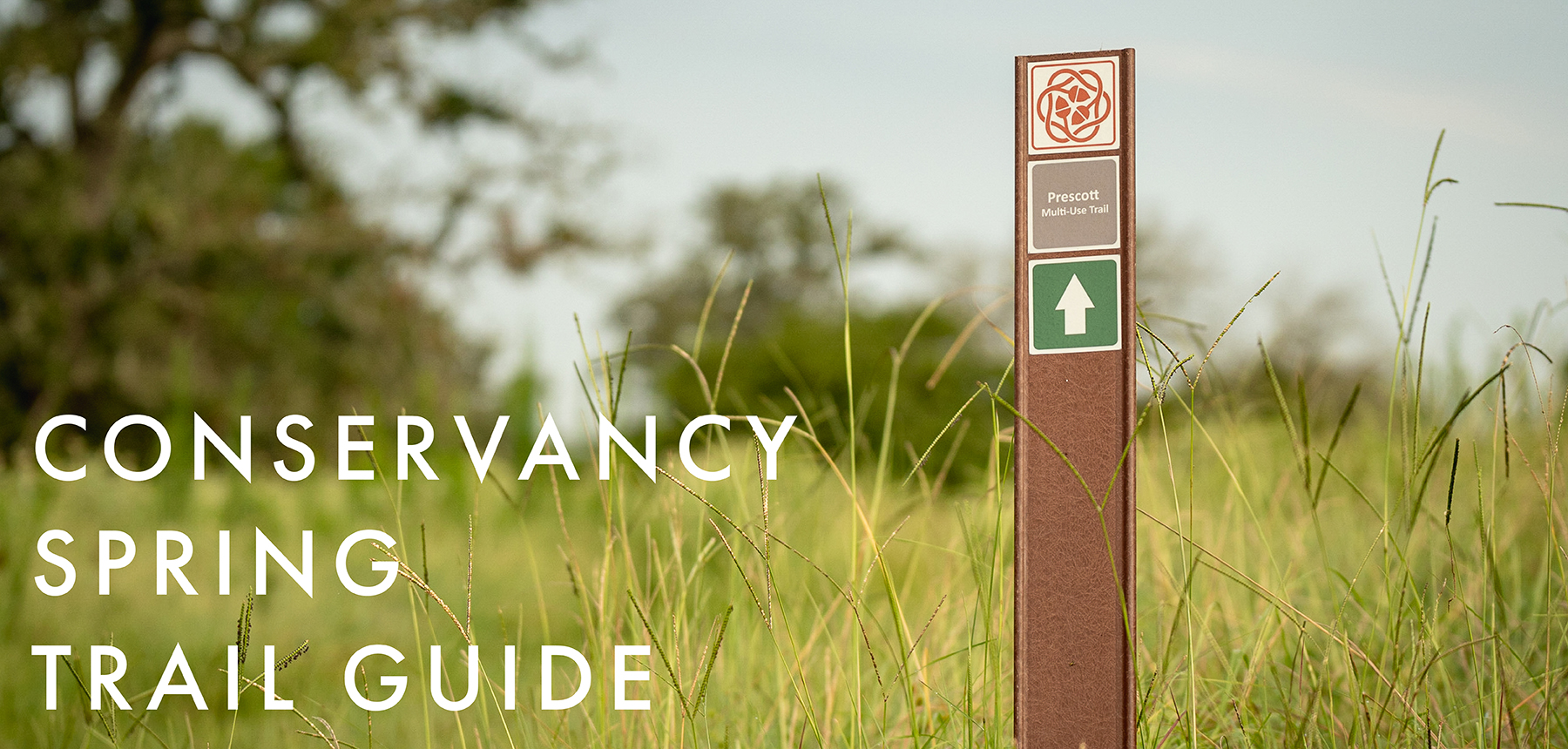
Prescott Trail Guide: Spring Edition
Hit the trails before Spring is over!
Prescott Trail is one of our favorite and most frequented trails at Millican Reserve. Here are a few of our favorite views from the trail as well as native flora and fauna you can see this spring.
Prescott Trail is a 2.26-mile, easy hike that’s mostly flat, offering scenic lake views (see map below).

Views From the Trail
Wildlife to Keep an Eye out for
All of the lovely creatures pictured here were identified within the past month. Several pairs of Canadian Geese were spotted this past week. Carolina Chickadees and Cardinals often flutter around the Grove, while Great Egrets, Great Blue Herons, and other waterfowl can be spotted along the shores of our many ponds and Prescott Lake. This Stilt Sandpiper was caught wading by the Grove, he’ll hopefully remain with us through the spring.
Wildflowers Galore!
Wildflowers blanket Millican Reserve in the spring. Take one of our many trails, or just stroll around Mount Millican, and you will see countless varieties in every direction!
Fun Flora and Fauna Facts!
There’s a lot to see along Prescott Trail. Here are some fun facts about a few of the different flora, fauna, and other things that may catch your eye.

Tiny Bluet/ Houstonia pusilla
FUN FACT: Tiny bluets are one of the first native flowers to bloom each spring.
It’s no wonder how this flower got its name; it is typically only 0.5 – 1 cm in diameter! Although these can be white, most of the tiny bluets found here at Millican Reserve are a light purple hue. This species commonly grows alongside other small weedy plants because of mutually beneficial relationships.

Southern Dewbwerry/ Rubus trivialis
FUN FACT: This plant is just a different variety of the blackberries you buy at the grocery store!
Although it may not look like it, this plant is a member of the rose family. In the spring, a white, 5-petal flower grows before turning into a 1-inch fruit, which can be enjoyed raw or as a jam. The plant grows through spiked trailing stems close to the ground with serrated leaves.

Burl
FUN FACT: This is a growth on a tree caused by rapid division of cells, similar to cancer in animals.
They are usually harmless, but burls can potentially shorten the tree’s lifespan. Burls are prized by woodworkers for their unusual swirling grain patterns; however, harvesting a burl will cause significant harm to the tree.


Moss / Byro
FUN FACT: There are over 10,000 species of moss worldwide!
Moss is unique from other plants for many reasons. As one of the first plants to ever live on the planet, they remain very simplistic. They do not have true roots; instead, they attach themselves to trees, rocks, and soil using rhizoids. Moss reproduces through spores rather than seeds, flowers, and pollen. Lastly, moss gets all of its nutrients from sunlight and moisture.

Whitetail Deer / Odocoileus virginianus
FUN FACT: Whitetail deer can be found all the way from southern Canada to northern South America.
Spotting more than a glimpse of a whitetail deer can be a challenge because they are easily spooked. Whitetail deer are the smallest deer species in North America. They can be spotted by their white markings around their eyes, nose, throat, and on the bottom of their tails.

SWAMP HOLLY (Ilex decidua)
FUN FACT (or maybe not): This plant is toxic to humans.
Swamp holly is one of the longest-lasting berries you’ll find in the springtime. Since these orange-colored berries do not taste pleasant, and wildlife tends to eat better-tasting food first, these berries can usually still be found later in the season.

Wildlife Management Practices
FUN FACT: The Conservancy manages nearly 1,000 acres of open space, trails, and other natural areas.
One of the most obvious signs of our wildlife management efforts along Prescott trail are the many bird and duck boxes that we maintain.

Now you’re ready to hit the trail!
Head out to Millican Reserve, entering at the Farm Entrance on FM 2154, and park at Basecamp (the grass parking lot in front of the Farm). You’ll see the Trailhead marked about 30 yards to the left of the Basecamp kiosk. Take a look at the trail map posted on the kiosk, apply sunscreen and bug spray, grab a water bottle, and you’ll be ready to go. Make sure to keep the lake to your right throughout the hike and follow our trail signs to stay on track! Enjoy!
Don’t have Conservancy Membership / a TrailPass yet? Join here.

















